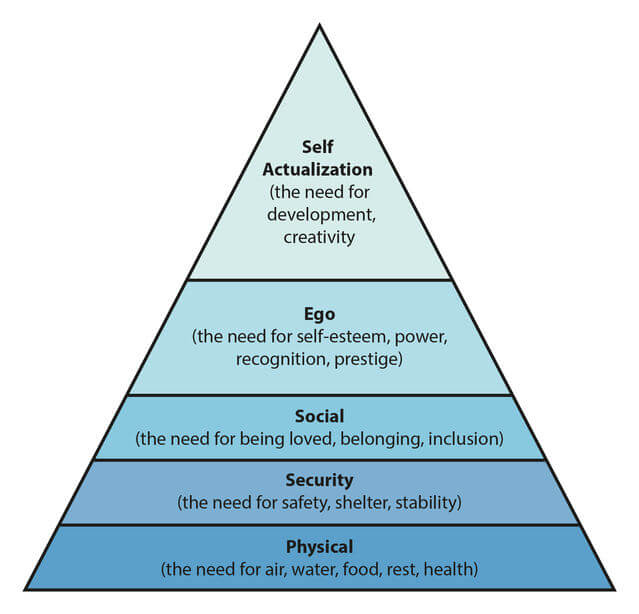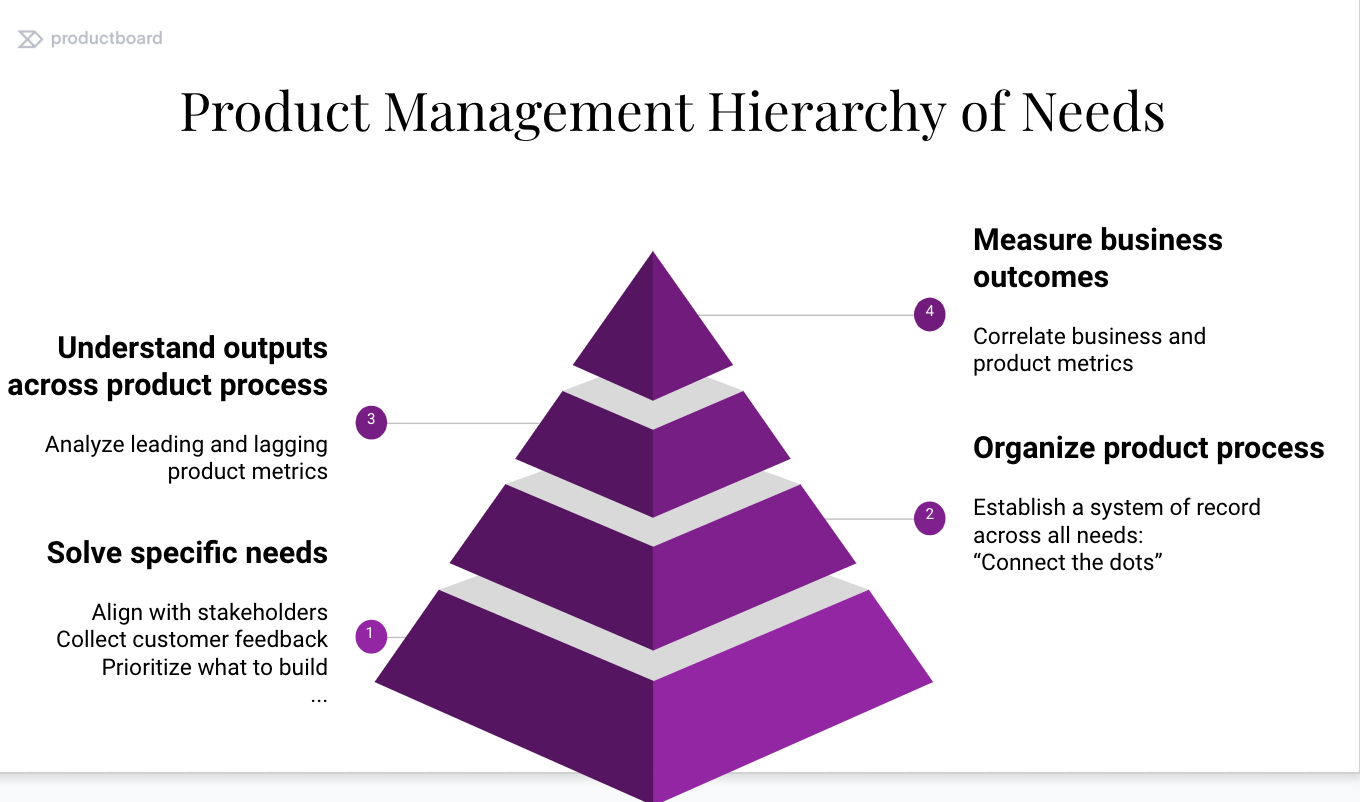Applying Maslow’s Hierarchy of Needs to product management

As humans, we all have basic needs: food, water, air, shelter, and safety — to name just a few. And according to psychologist Abraham Maslow, these needs are structured in a pyramid, the Hierarchy of Needs.

The needs at the lower levels of the pyramid are our most basic needs — if they’re met, we don’t really notice, but if they’re not met, we feel anxious and can’t focus on anything else. The higher you go up the pyramid, the more complex the needs become. So while the bottom layers focus on what we need as humans to survive, the top layers focus on what we need to thrive.
In our team’s quest for Product Excellence and a holistic approach to product management, we like to apply the same idea to our product practices.
Introducing the Product Management Hierarchy of Needs. The chart below provides a quick overview, but in the rest of this post we’ll examine each layer in more detail.

Level 1: Solve specific, fundamental needs
Typically, product managers or teams have a few fundamental needs.
They need to build a roadmap so they can visualize different priorities and timelines. A clear roadmap also helps them reach alignment with everyone in the organization, get consensus, and manage stakeholders.
Another common fundamental need is a way to gather feedback from customers efficiently and effectively. If there’s no organized way to gather customer feedback, it’s difficult (if not impossible) to decide what you’re going to build next.
Level 2: Organize product practices
Once a product manager has figured out how to meet their specific needs in level 1, they are ready to look for a way to connect the dots. How do these things work together? How does feedback tie into prioritization or how does prioritization tie into the roadmap? How does the roadmap correspond to the development plan once you release it? Is it actually getting adopted?
This is where people want to start to have visibility into how the product lifecycle looks in totality. They’re able to gather feedback from various sources like customers, market analysis, or user research and use that feedback to inform their strategy. For example, through feedback a product team might learn that a particular segment of customers represents a big opportunity. Or, they might see that while a particular segment is promising, it would take too many resources to solve that particular problem, so it makes more sense to focus on a narrower solution.
The holistic product process connects the dots from a workflow perspective. It defines how you get from the beginning — the understanding of the outcomes, needs, and pains of your customers — to actually building and delivering something that addresses them. And there’s a way for you to measure that it actually addresses a problem.
Underpinning this workflow is the system of record. Instead of having a roadmap here and your objectives somewhere else, it’s all connected. Now the product team’s work is connected both by workflow and systems. All the information is in one place, you understand all of the decisions that are being made, and collaboration is much easier because everyone is using the same framework. For more on the benefits of a system of record, check out this post.
Level 3: Understand outputs across product practices
After a team begins receiving feedback from customers, processing it at a certain frequency, and deriving some intelligence out of it, they can start measuring things such as leading and lagging indicators.
Leading and lagging indicators will vary depending on your industry and business, but there are some we can generalize. For example, at productboard we believe that continued understanding of feedback and deriving intelligence from it is really important. If this resonates at your organization, you can have metrics around how many notes arrive, what’s the throughput, and how frequently people actually read them. Is the product manager the only one who is reading them, or is it maybe the designer and engineer, too? Once they’ve derived insights out of the notes, how did it affect the product prioritization process in terms of objectives?
Similarly, there are product metrics and product process metrics. These metrics include things like sharing your roadmap with relevant stakeholders, having stakeholders provide feedback on the roadmap, and delivering against it. You could also consider whether you have defined objectives for your team, prioritized key initiatives, and are doing all of this on a regular basis. Do you have a prioritization framework set up that helps you to make decisions on what to focus on?
For the product process metrics, first consider whether you are collecting feedback from your customers. If you are, look at how frequently you’re receiving it, whether it is beneficial for your future planning, and how involved your entire team is in listening and understanding that feedback.
Level 4: Measure business outcomes
The highest level of the pyramid involves correlating product and business metrics.
If a team achieved this, they’d be able to demonstrate the correlation between what they’ve built — as a result of customer feedback and intelligence — to actual business outcomes such as revenue or company growth. And we’ve seen some good anecdotal evidence pointing us in that direction. For example, UiPath attributes much of their record growth to staying aligned on product goals.
A few final thoughts
What we’ve outlined in this post is a vision of how a fully integrated and holistic product management process could be. Thinking of it in terms of Maslow’s Hierarchy of Needs, you can fulfill your need for food with a simple soup — or you can go to a Michelin three-star restaurant. At productboard, we plan to continue to strengthen and enhance how we meet our fundamental product needs and continue moving on to the higher levels.
We’re curious to hear about how this resonates with you. Where do you see yourself on this journey? Can you think of any fundamental needs other than the ones we’ve outlined? Do you have any examples of leading or lagging product or product process metrics you’d like to share? Feel free to add your thoughts below!
By the way, if you’re looking for a solution to help you with this process, productboard is here to serve your fundamental needs. We offer tools to help you collect feedback, outline and communicate your roadmap, and create a system of record. And we’re continuing to think about how we can support you as you move up the hierarchy of needs. Want to explore what this might look like for your team? Try out productboard today.




